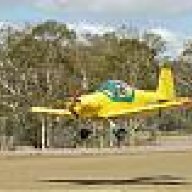Ignition, I think you have a load of valid points. When I started flying I was lucky to have a load of enthusiastic flyers around me at the several clubs I was involved with. That was due to my job taking me all around the country.
I had a break from flying at one stage and when I returned the instructor who was checking me out was trying to milk me for money. That resulted in him getting sacked and another instructor immediately OKayed me after less than an hour. Sadly that sort of behaviour is too common.
I would also agree about the old blokes being less than enthusiastic, something I have tried to avoid becoming myself, in fact now when I say I am thinking of giving up flying, the youngsters are straight away trying to dissuade me.
The problem is we old blokes know it all and it has to be done our way, If we didn't think of it, then it is no good. Is that how we come across, Ignition? I hope you consider there are a few who try to help you.


